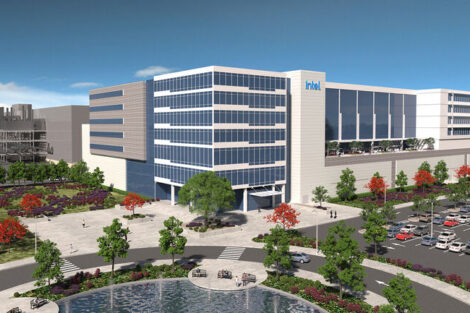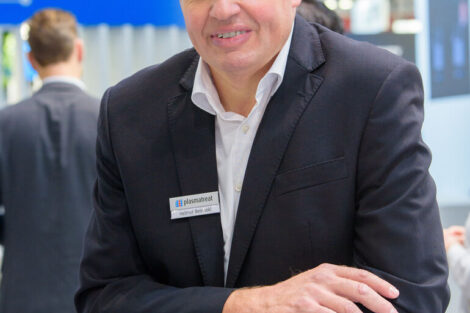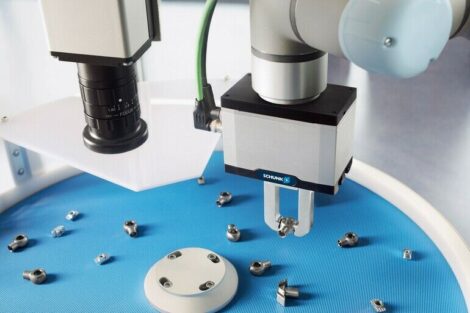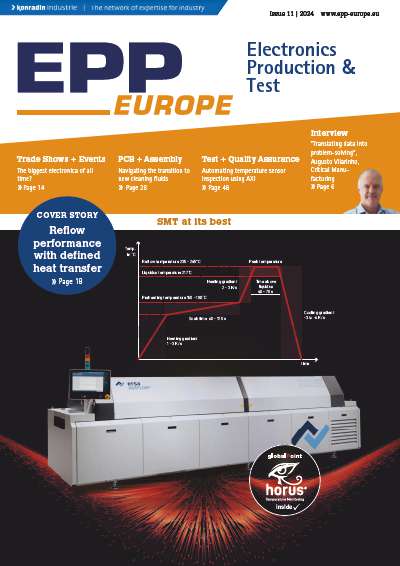The Swedish SMT equipment company Mydata has acquired its former German rep Royonic, with all assets, in a fair deal. Since June 2008 the German subsidiary, located near Munich, is now part of the group. Royonic was established more than 30 years ago and has delivered thousands of its own assembly and rework stations to customers. The company became the exclusive representant for Mydata systems in the German-speaking area in Europe in 1991. We discussed the reason for this acquisition and other topics in the electronics assembly industry with Robert Göthner, Mydata’s VP Marketing and Sales.
Just recently you took over your former German rep, Royonic. What where the reasons for this move?
Royonic has been our Distributor for a very long time. They have built up a very successful business for us in Germany. Mydata’s acquisition of Royonic enables us to further expand and grow our business in Germany which is one of our most important markets worldwide. In April 2008 we launched a brand new pick-and-place machine series, the MY 100 DX, and we see great potential for this platform also in Germany, as well as for the MY 500 Jet printer. Another factor influencing our decision is Royonic’s own product range, for example, the SMD-Tower which is a compact intermediary component storage system. This equipment complements our product portfolio very well. We see the acquisition as a natural step for us to develop our business further, and will continue to build on Royonic’s success in the market place.
Which technological trends do you see and experience in the field of placement equipment, and what is your answer and solution to these tendencies in business?
Seen from a pure technological point of view, the trend is still towards use of smaller component footprints and new types of high dense device packages. But there are perhaps other factors that have even more impact on customers’ choice of pick-and-place technology. The biggest factor is the need for machines which enable truly flexible production concepts; fast set-up and change-over times, ability to handle a large component range and various board sizes, as well as effective throughput for both short and longer series production. The need for flexible machines has been a key requirement for short series production for a long time, but more and more ‘higher volume’ customers now are also requiring much more flexibility then in the past, due to changes in their mix of production as well. Another factor that is fueling the flexibility trend is customers’ time-to-market pressure. Time-to-market is becoming critical, and this has a direct influence on the level of flexibility in the pick-and-place machine concepts, meaning that managing the chain from NPI (new product introduction) to series production is much faster. Mydata is very well positioned to meet these requirements. We believe we by far have the strongest flexibility concept in the market. Our Agilis feeder concept is unmatched in the industry, enabling very fast set-up and changeover times. This in combination with a very powerful software suite means we can match customers’ flexibility requirements today and in the future.
Which Mydata machine platforms are now the favorites, and what makes them special or unique?
As mentioned, we launched our new pick-and-place machine series – the MY 100 DX. This platform is compatible with our previous pick-and-place platform featuring the same level of flexibility, with the difference that the throughput has increased by 80 %. The rated top-speed is at 34 kcph. This enables us to deliver an unmatched flexibility to customers with higher volumes without compromises.
Mydata reportedly introduced the only functional system for solder paste jetting a couple of years ago, exactly during Productronica 2005. How was and is this remarkable innovation received by your customers and how do you see the further development of this technology?
We launched our second-generation MY 500 Jet printer at Productronica 2007. Several customers in Europe now use the MY 500 in industrial production. The interest is high in the market, and customers realize the benefits very quickly when they see the machine. Again flexibility is a key benefit, but also improved quality and ease-of-use. Looking at the current customer engagements we think that 2008 will be our commercial break-through year for the MY 500. Even though we recently launched the second generation, we are still in a fairly early stage of the development of this printer platform for solder paste and adhesive. We definitely have plans to increase the performance of the machine over time in all relevant aspects.
Which position has Mydata today in the different worldwide markets, what is the installed base and what kind of customers do you serve?
Our largest markets today are North America and Western Europe, but we are growing nicely in Asia as well – with more than 2000 customers worldwide across all industries. We have a leading market position in the high-mix, low to medium volume segments.
As a designer and supplier of flexible to use placement equipment, how would you evaluate the current economical scenario in the global electronics assembly? Because of the now prevailing signs do you expect a recession in our industry?
This is a good question. From an overall perspective there was a downturn of the SMT equipment business last year already, with an overall decline of 14 % in our machine segments, and, in addition, there was the impact of the weakened dollar. We do not expect the SMT market to continue to decline at this pace as we look ahead, but we do not expect a growth scenario either. Looking at the macro indicators, such as the overall growth of the electronics production worldwide, the impact of recent signals is harder to assess. The latest reports indicate that the overall growth in the electronics industry will slow down in the Western world, while China and some other markets still foresee strong growth. Our expectation however is that the possible recession will hit consumer and computer electronics first, and a bit later industrial and other special electronic areas. We will see slower overall development in the next few years, but hopefully not a real recession. (gbw)
Share:













